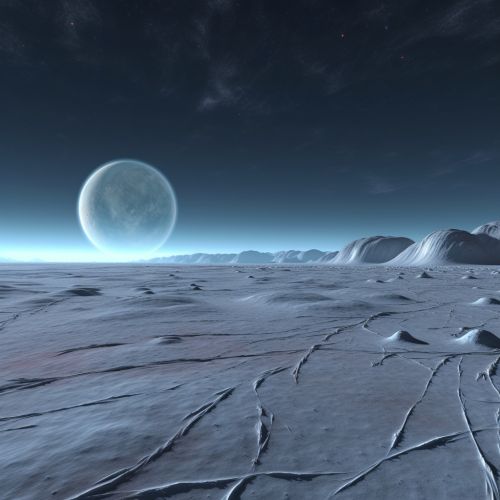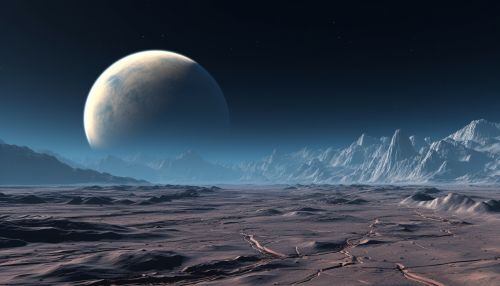Europa (moon)
Introduction
Europa, also known as Jupiter VI, is the smallest of the four Galilean moons orbiting Jupiter, and the sixth-closest to the planet of all the 79 known moons of Jupiter. It is also the sixth-largest moon in the Solar System. Europa was discovered in 1610 by Galileo Galilei and was named after the Phoenician mother of King Minos of Crete and lover of Zeus.


Physical Characteristics
Europa is slightly smaller than Earth's Moon. Its surface is composed primarily of water ice and is one of the smoothest in the Solar System. This young and smooth surface is marked with a complex array of streaks, bands, and circular features, which suggest that the ice has been broken up and rearranged.
Internal Structure
Europa's internal structure includes a thin outer layer of ice, a thick and slightly convecting ice shell, and a silicate mantle and core. The existence of an internal ocean within Europa is inferred from these structures and the moon's geology and is considered likely due to the tidal heating from the intense gravitational interactions with Jupiter.
Atmosphere and Climate
Europa has a tenuous atmosphere composed primarily of molecular oxygen. The surface temperature of Europa averages about 110 Kelvin at the equator and only 50 Kelvin at the poles, keeping Europa's icy surface quite hard and brittle.
Geology
Europa's icy surface has been modified by both impacts and geologic processes. Its surface is riddled with cracks and streaks, while craters are relatively rare. Some of the geologic features suggest that the ice crust was broken up and moved around, creating a dynamic environment that could be beneficial for life.
Potential for Life
Europa is considered one of the most promising places in the Solar System for potential habitability. Life could exist in its under-ice ocean, perhaps in an environment similar to Earth's deep-ocean hydrothermal vents. On the downside, the surface is bathed in intense radiation from Jupiter's magnetic field, which would be harmful to life as we know it.
Exploration
Europa has been visited by several spacecraft, including the two Voyager spacecraft, the Galileo orbiter, and the Juno spacecraft. NASA's upcoming Europa Clipper mission is set to launch in the 2020s and will conduct detailed reconnaissance of Europa's ice shell and subsurface to investigate its habitability.
